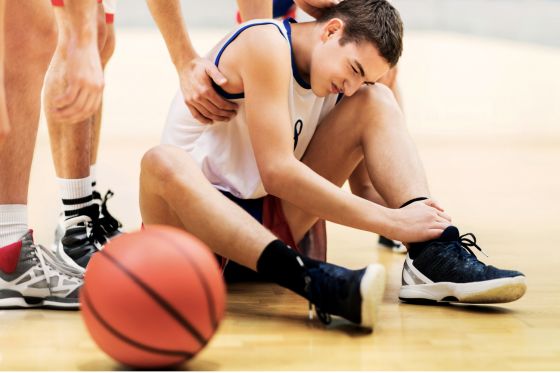When you’re passionate about sports, there’s always that risk of injury looming in the background, and it can be more than just a physical setback.
The constant worry can affect your game, making you cautious when you should be confident.
If you’re struggling with sports injuries or fear that an injury could be around the corner, there’s good news—you’re not alone, and help is available.
This blog will dive into which sports tend to have the most injuries and what you need to know to play smarter and safer.
Understanding Sports Injuries
Sports injuries can stem from various factors—overuse, improper technique, lack of conditioning, or just plain bad luck.
These injuries often come with a ripple effect, causing physical pain and a mental toll.
You might be forced to sit out crucial games, deal with chronic discomfort, or even face the end of your athletic journey.
Conditions like sprains, strains, and stress fractures are common, but so are more severe injuries like ACL tears or concussions.
The impact can be devastating, but knowing where these risks are most likely to occur can give you a strategic edge.
Which Sports Have The Most Injuries? What You Need To Know
When it comes to sports with high injury rates, these are some of the top contenders:
Football
Football is an intense, high-impact sport that involves frequent collisions and sudden movements.
The physicality of the game results in a high risk of injury. Concussions are among the most common, resulting from head-to-head contact or impacts with the ground.
ACL tears and shoulder dislocations are also frequent due to the intense tackling and rapid changes in direction.
Other injuries include fractures, wrist sprains, and muscle contusions.
Soccer
Soccer players constantly run, pivot, and change direction, leading to a significant risk of injuries.
Ankle sprains are a top concern, often occurring during a rapid shift or misstep.
Knee ligament tears, especially ACL injuries, can happen from awkward landings or collisions.
Hamstring strains are also common due to the sudden bursts of speed required in the game.
Concussions can occur from heading the ball or clashes with other players.
Basketball
Basketball’s fast pace and frequent jumping contribute to a range of injuries.
Ankle sprains are widespread due to the quick lateral movements.
Knee issues, such as meniscus tears and patellar tendinitis, are also common, especially from landing awkwardly after a jump.
Finger injuries often result from contact with the ball or other players.
Achilles tendon injuries can occur with excessive stress on the calves from frequent jumping and sprinting.
Baseball/Softball
Though less intense than football, baseball, and softball pose unique risks due to repetitive motions.
Shoulder injuries, such as rotator cuff tears, are common among pitchers from repetitive overhead throwing.
Elbow tendinitis, known as “pitcher’s elbow,” results from the stress of pitching or batting.
Hamstring strains and back pain are also frequent due to the sudden sprints and twists involved in the game.
Rugby
Rugby is similar to football in terms of high-impact collisions but with less protective gear.
This leads to a higher incidence of bruises, sprains, and concussions.
The physicality can cause severe injuries like fractures and dislocations.
Ankle sprains and shoulder injuries are common due to the intense scrums and tackles.
The lack of helmets and pads means players are more vulnerable to head injuries.
Tennis
Tennis involves repetitive movements and rapid footwork, leading to a risk of overuse injuries.
Tennis elbow is common among players due to the strain placed on forearm tendons from repetitive swings.
Shoulder strains can occur from serving, while ankle injuries can result from quick lateral movements.
Stress fractures and shin splints can also develop from constant running and sudden changes in direction.
These sports carry risks, but with proper training, conditioning, and injury-prevention strategies, you can play safely and enjoy the game without the fear of injury.
Spring Into Action with Premier Injury Prevention & Care
For insights into preventing injuries and keeping your game strong, download our Free Advice Report packed with useful information for athletes.
You can also book a Free Telephone Consultation with our expert team to address your concerns and lay out a plan to enhance your athletic prowess while sidestepping injuries.
If you’re ready to take the next step, you can come and see us for a Free Discovery Visit at our physical therapy clinic in Rockland County and find out how we can help you recover from or prevent injuries.
Don’t let an injury bench you for the season. The right assistance is imperative to ensure you’re not sidelined for an extended period.
Whether you’re recovering from an injury or aiming to prevent one, we’re your go-to resource for returning to your peak form through the power of physical therapy.
Join us and take control of your athletic destiny as we gear up for a season of victory and vitality.
More Free Advice For Common Sports Injuries
If you want to get more tips and advice on injury prevention, you can follow us on social media and read our expert articles.
Follow us on Facebook and Instagram for more free tips and updates from our Rockland County physical therapy clinic.
Read our expert article to learn about The 10 Most Common Sports Injuries, And How You Can Avoid Them
Spring Training: 5 Expert Tips To Safely Increasing Sports ActivityFind out from our expert article.
Find The Best Rotator Cuff Exercises For A Rotator Cuff Tear in our expert blog.




